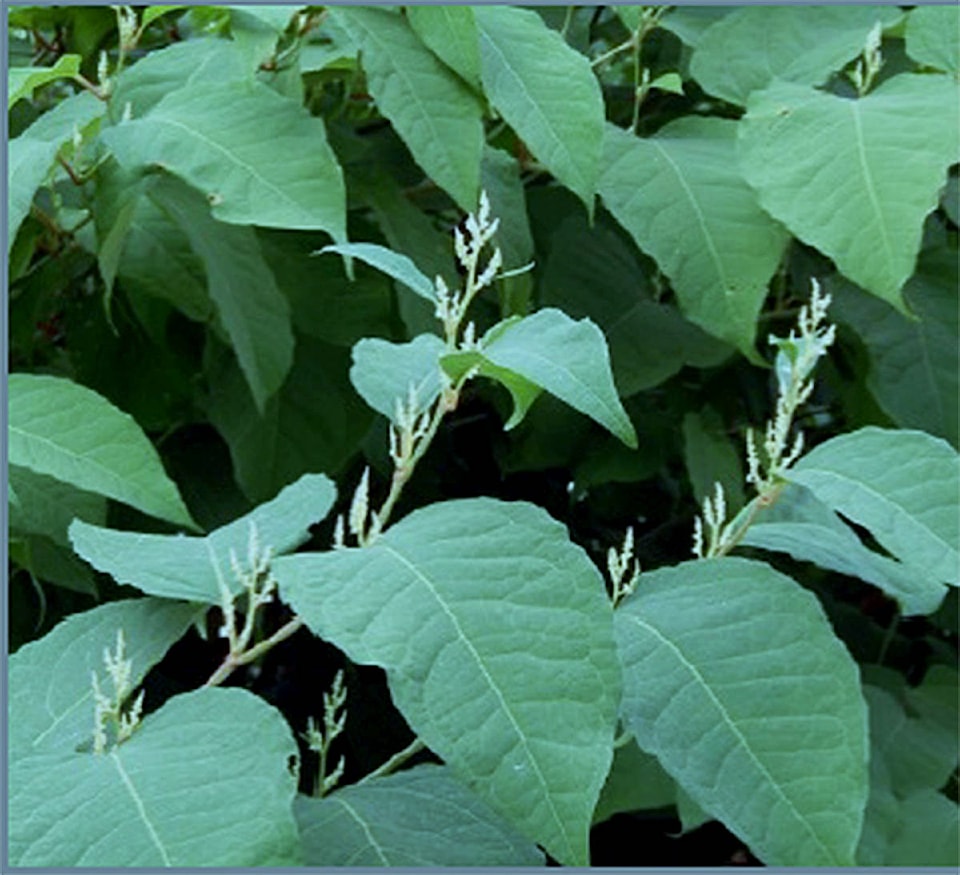The Thompson-Nicola Invasive Plant Management Committee (TNIPMC) is asking the public to be on alert for invasive Japanese knotweed and report sightings in the Thompson-Nicola Regional District.
Public input will be used to help update the knotweed inventory for the region and will assist in the development of a strategy to support Japanese knotweed management throughout the TNRD. To report knotweed in the region and get more information, visit www.tnipmc.com, call 1-250-851-1699 or email invasiveplants@tnrd.ca.
Japanese knotweed are one of the 100 worst invasive species as identified by the International Union for Conservation of Nature (IUCN). The invasive perennial plant is native to eastern Asia and was introduced to North America in the 1800’s as an ornamental plant. It’s widely spread throughout the coastal regions of BC and several infestations are known within the TNRD. Japanese knotweed is often mistaken for bamboo; however, it is easily distinguished by the zigzag pattern in which its broad leaves are arranged along the plant’s arching stems.
Japanese knotweed are often found growing next to homes and within ornamental gardens. Its highly aggressive root system can extend 20 m across and 3 m deep, and can penetrate septic beds, home foundations, retaining walls, asphalt and other critical structures.
This plant reproduces by seed and through root and shoot fragments (as small as 1cm). Manual removal such as digging and cutting plants is not recommended and could make the infestation worse. Contact a specialist prior to managing knotweed infestations to discuss a management and disposal plan. Learn more about Japanese knotweed and other invasive species at www.tnipmc.com.
